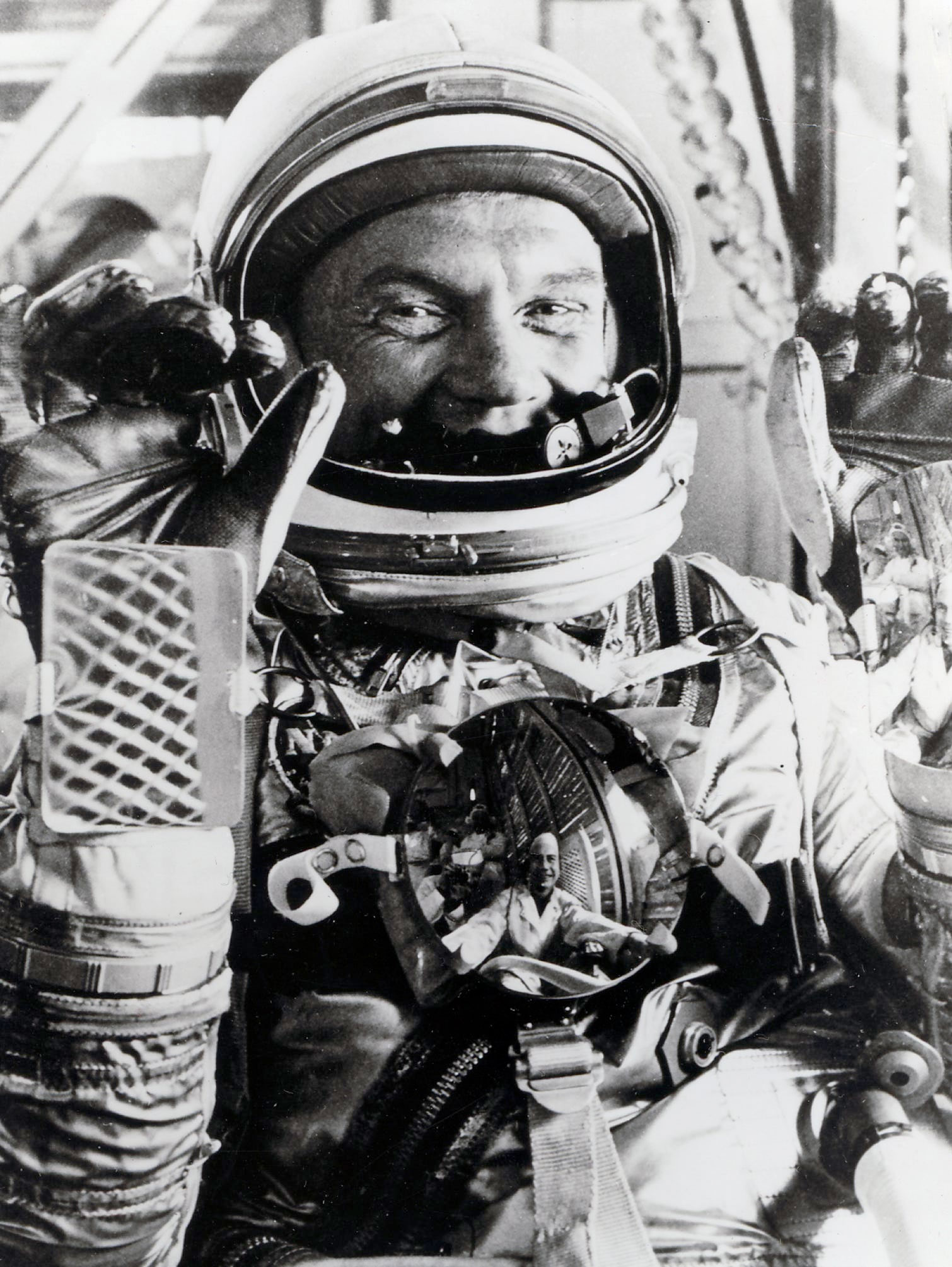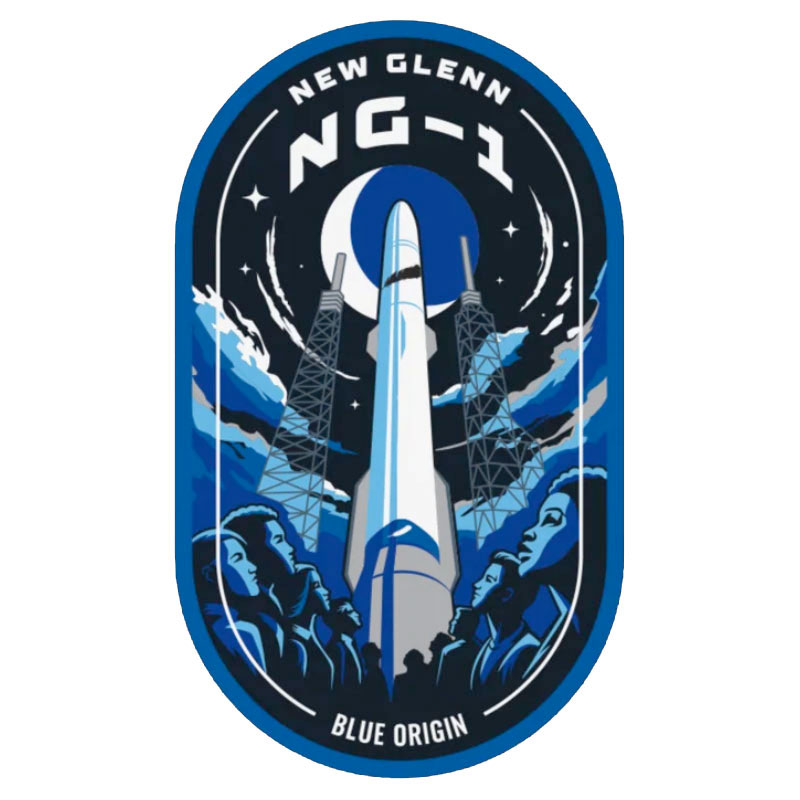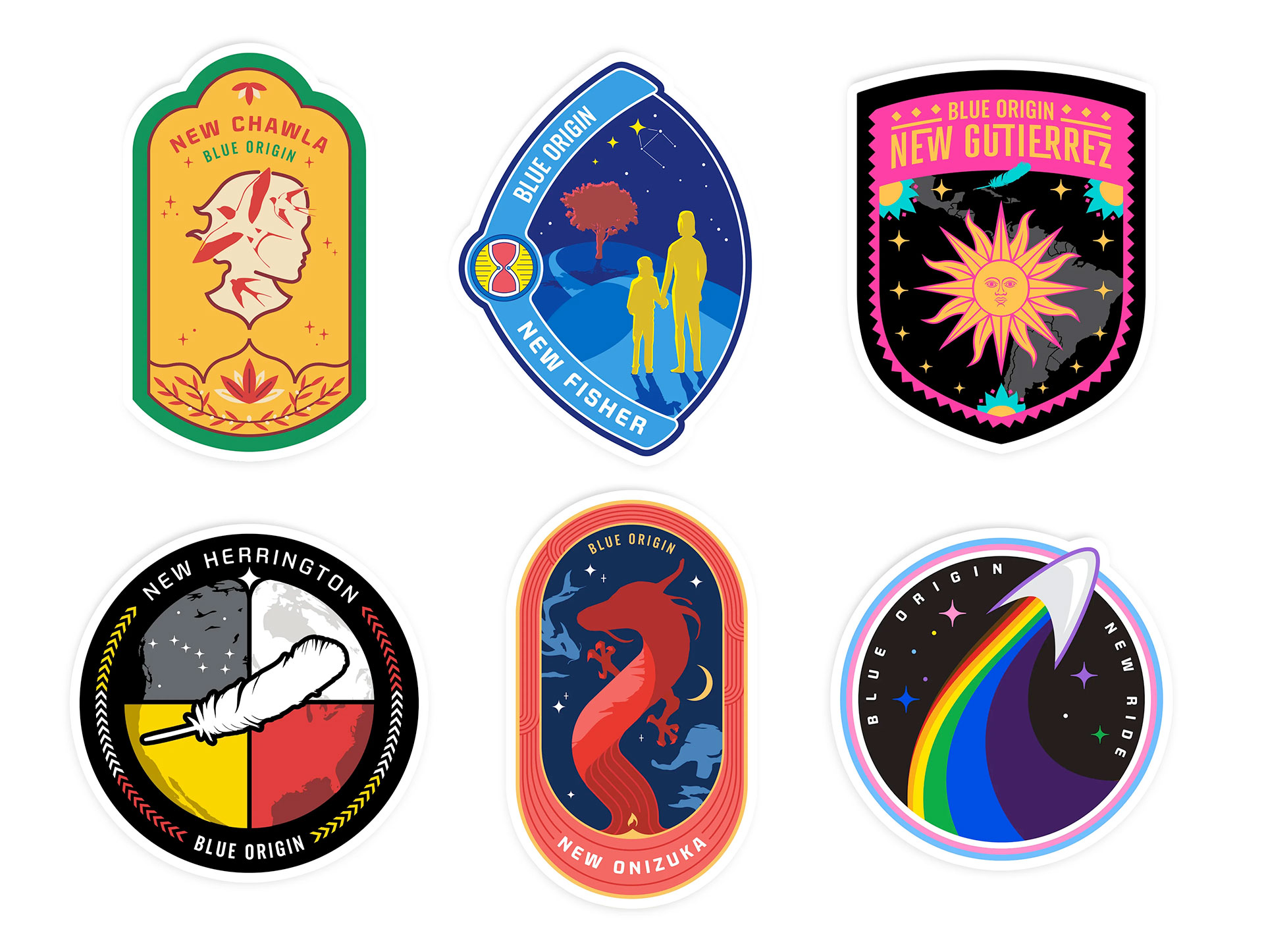John Glenn’s last correspondence before his death was to approve the use of his name for Blue Origin’s first orbital-class rocket.
Nine years later, the “New Glenn” is ready for its inaugural launch. Though he did not live to see it come about, Glenn — the first American to orbit Earth in 1962 — hailed the booster’s soon-to-be-demonstrated capabilities for what they could hold for the future of human spaceflight.
“As the original Glenn, I can tell you I see the day coming when people will board spacecraft the same way millions of us now board jetliners,” wrote the Mercury astronaut and U.S. Senator in 2016, adding that he was “deeply touched” that the New Glenn would fly with his name.

One of the key factors to that future becoming a reality is the ability “to get to space more often and more inexpensively,” Glenn wrote, which is why the New Glenn was designed to “be reused over and over again.”
Related: John Glenn: America’s 1st space hero
At the time Glenn wrote his letter, the only commercial rocket to launch, land and be reused was Blue Origin’s New Shepard suborbital booster. It was not until a month after Glenn’s death that SpaceX followed with the first orbital launch of a “flight proven” Falcon 9 rocket.
Now, New Glenn is ready to fly, and should all go to plan, fly again and again and again. Each rocket’s first stage, which is powered by seven BE-4 engines, is rated for 25 flights. The first 322-foot-tall (98 meters) New Glenn, nicknamed “So You’re Telling Me There’s a Chance” after a line from the 1994 comedy “Dumb and Dumber,” is set to launch from Space Launch Complex-36 at Cape Canaveral Space Force Station in Florida on the NG-1 mission carrying a pathfinder for Blue Ring, Blue Origin‘s multi-mission space mobility platform.
Guarding the Glenn name
Glenn’s letter, which he addressed to Blue Origin founder Jeff Bezos, was first made public on the day that he died, Dec. 8, 2016 — two weeks after he wrote it. Speaking at the Smithsonian American Ingenuity Awards ceremony, astronaut Mae Jemison read Glenn’s words as part of a tribute to Bezos, who was among that year’s honorees.
In January 2024, Trevor Brown, dean of the John Glenn College of Public Affairs at The Ohio State University in Columbus, recalled the same correspondence at an event honoring Glenn and the other astronauts who hailed from Ohio.
“He knew the innovative power that the private sector could bring to the next phase of space exploration, which is perhaps why he was willing to lend his likeness to adorn Blue Origin’s soon-to-be-launched New Glenn rocket, something that he had ceded to right before he died,” said Brown. “In fact, it is the last written communication from Senator Glenn, is a letter to Jeff Bezos, essentially applauding or approving of the use of his name on this rocket.”

Before his passing, Glenn entrusted the college to protect his legacy, assigning it control over his name and likeness.
“Much over the course of history has been made of Senator Glenn resisting the use of his likeness for personal gain. [His daughter] Lynn Glenn, at his memorial, shared that — and this was upsetting to her — that he turned down a million dollars to have his face on the box of Wheaties. It offended his moral sensibilities and his inherent humbleness that someone should use their personal likeness for personal gain,” Brown said.
“But at some point, when a person is as famous as a senator, your image is no longer your own, and people and organizations can use your name and your likeness, as it’s in the public domain. But many people are kind enough to ask,” he said.
Other than Blue Origin’s new rocket, the “original Glenn” was the posthumous namesake for one other spacecraft, Northrop Grumman’s (formerly Orbital ATK’s) seventh Cygnus resupply vehicle bound for the International Space Station. The S.S. John Glenn lifted off in March 2017 and spent two months at the orbiting lab before being purposely destroyed during its reentry into Earth’s atmosphere.
Related: The Cygnus spacecraft: Northrop Grumman’s cargo ship
‘New’ crew
As Glenn mentioned in his letter to Bezos, the New Glenn is “the second generation” of Blue Origin’s reusable rockets. The first, the New Shepard, has been flying crewed and cargo suborbital missions since 2015.
Like the New Glenn, which paired the company’s first orbital rocket with the United States’ first astronaut to fly into orbit, the New Shepard was named after Alan Shepard, the first American in space, who flew on a 15-minute suborbital launch in May 1961.
The “original” Shepard died in 1998, two years before Bezos founded Blue Origin, so was not aware of any plans to name a rocket after him. It is not known if Bezos sought permission from Shepard’s family, but it is clear that at least one member had no issue with it — Laura Shepard Churchley, Shepard’s eldest daughter, flew to space on New Shepard in 2021.

Blue Origin has also named a number of its business groups after astronauts, including: the New Chawla (named after the late Kalpana Chawla, the first immigrant Indian-American woman to become an astronaut); New Fisher (Anna Lee Fisher, the first mother to fly in space); New Gutierrez (Sidney Gutierrez, the first American-born Hispanic astronaut); New Herrington (John Herrington, the first enrolled member of a Native American tribe to fly in space); New Onizuka (Ellison Onizuka, the first Asian-American astronaut); and New Ride (Sally Ride, the first American woman in space and first-known LGBTQ+ person in space).
At the same time that Blue Origin announced the New Glenn in 2016, it also teased about an even larger, more powerful rocket, the “New Armstrong.” Named after the late Neil Armstrong, the first person to step foot on the moon, the company has not said more about the name or its plans for the future booster.
Follow collectSPACE.com on Facebook and on X at @collectSPACE. Copyright 2025 collectSPACE.com. All rights reserved.